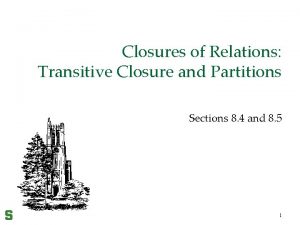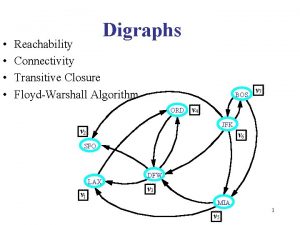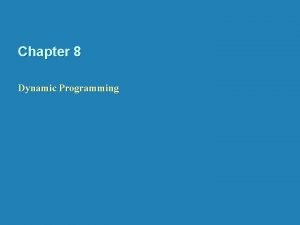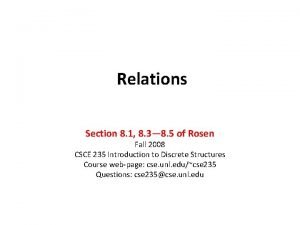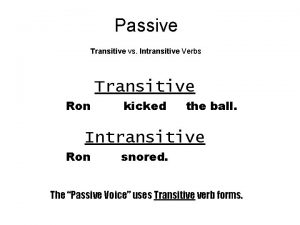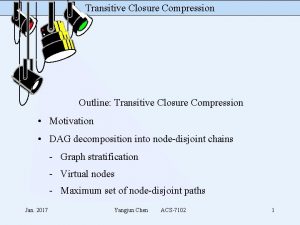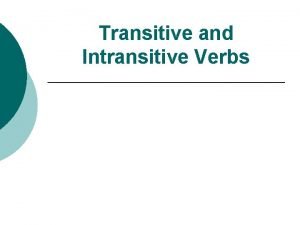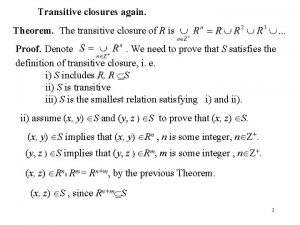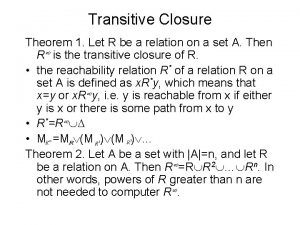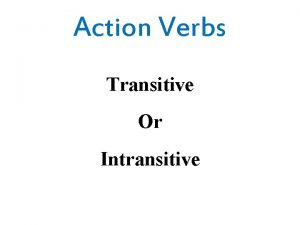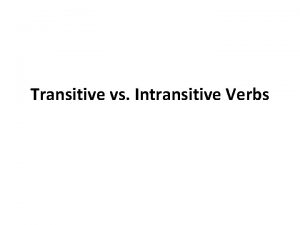2 5 Transitive Closure 1 Transitive Closure Let












- Slides: 12

2. 5 Transitive Closure 1

Transitive Closure Let R be a relation on a set A. Let of R. Three methods for finding a) Digraph Approach b) Adjacency Matrix method c) Warshall’s Algorithm be the transitive closure : 2

Example 1 Let A = {1, 2, 3, 4}, and let R = {(1, 2), (2, 3), (3, 4), (2, 1)}. Find the transitive closure of R. 3

Solution Method 1: Digraph: Listing all paths Vertex 1: has paths to vertices 2, 3, 4 and 1 (1, 2), (1, 3), (1, 4) and (1, 1) Vertex 2: has paths to vertices 1, 3, 4 and 2 (2, 1), (2, 3), (2, 4) and (2, 2) 1 Vertex 3: has path to vertex 4 (3, 4) Vertex 4: has no path to any of the vertices, including 4 4 2 3 ={(1, 1), (1, 2), (1, 3), (1, 4), (2, 1), (2, 2), (2, 3), (2, 4), (3, 4)} 4

Solution Method 2: Matrix Using formula: convert R to MR R = {(1, 2), (2, 3), (3, 4), (2, 1)} Find and 5

Solution 6

Solution 7

Solution Method 3: Warshall’s Algorithm convert R to MR R = {(1, 2), (2, 3), (3, 4), (2, 1)} 8

Solution Step 1: Observe value 1’s in column 1 : Observe value 1’s in row 1 : 2 2 So we have new 1 in position (2, 2). 9

Solution Step 2: Observe value 1’s in column 2 : 1, 2 Observe value 1’s in row 2 : 1, 2, 3 So we have new 1 in position: (1, 1), (1, 2), (1, 3)(2, 1), (2, 2), (2, 3) (if 1’s are not already there) 10

Solution Step 3: Observe value 1’s in column 3 : 1, 2 Observe value 1’s in row 3 : 4 So we have new 1 in position: (1, 4), (2, 4) (if 1’s are not already there) 11

Solution Step 4: Observe value 1’s in column 4 : 1, 2, 3 Observe value 1’s in row 4 : N/A So no new 1 to add. 12
 John 10:22-28
John 10:22-28 Transitive closure in daa
Transitive closure in daa Shortest paths and transitive closure in data structure
Shortest paths and transitive closure in data structure Transitive closure in discrete mathematics
Transitive closure in discrete mathematics Transitive closure example
Transitive closure example Floyd warshall algorithm transitive closure
Floyd warshall algorithm transitive closure Robot coin collection dynamic programming
Robot coin collection dynamic programming America my home sweet home
America my home sweet home Let him who has ears hear
Let him who has ears hear Let's let them object to another one
Let's let them object to another one Transitive in maths
Transitive in maths Transitive verb adalah
Transitive verb adalah Kicked transitive or intransitive
Kicked transitive or intransitive




